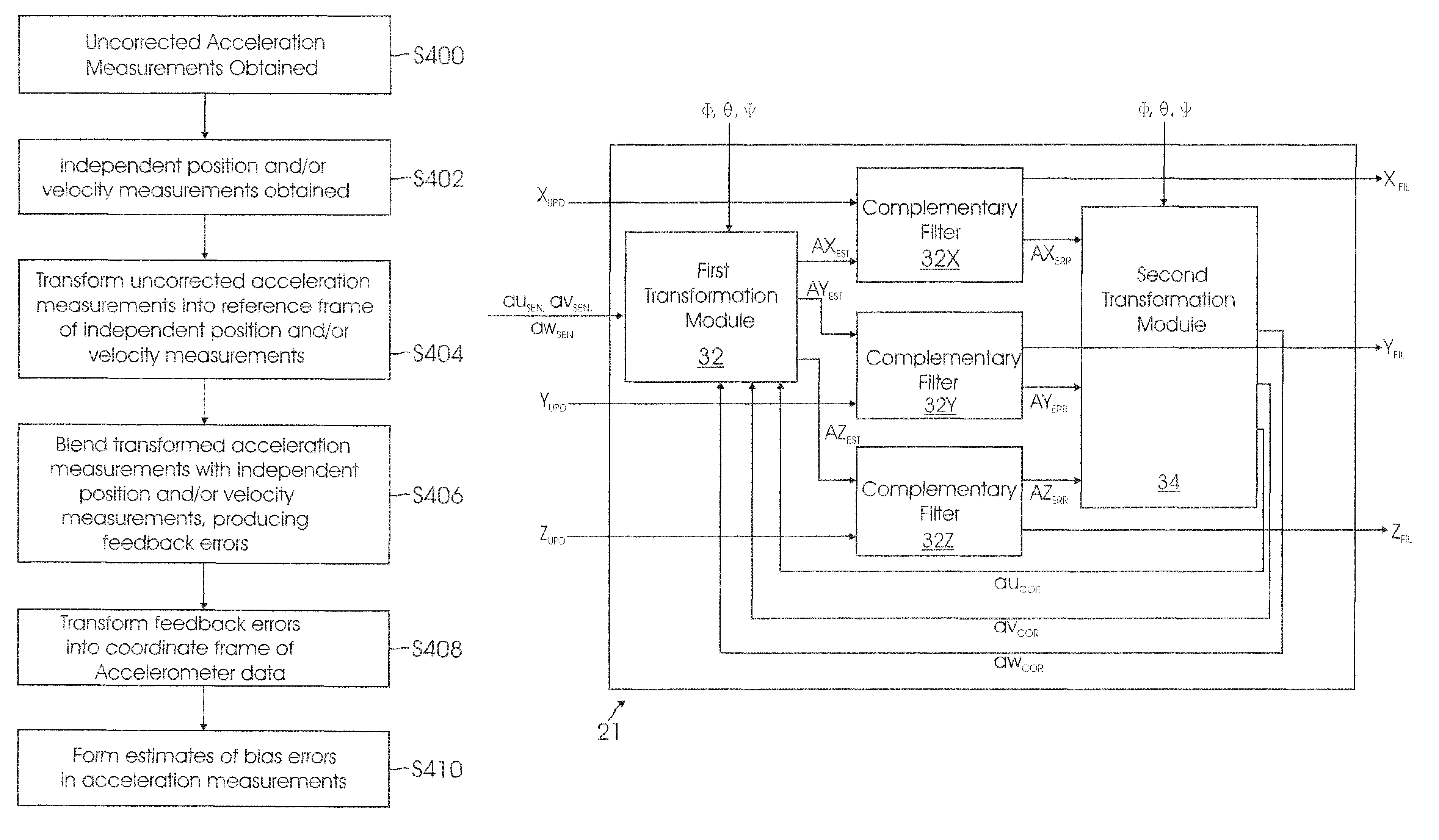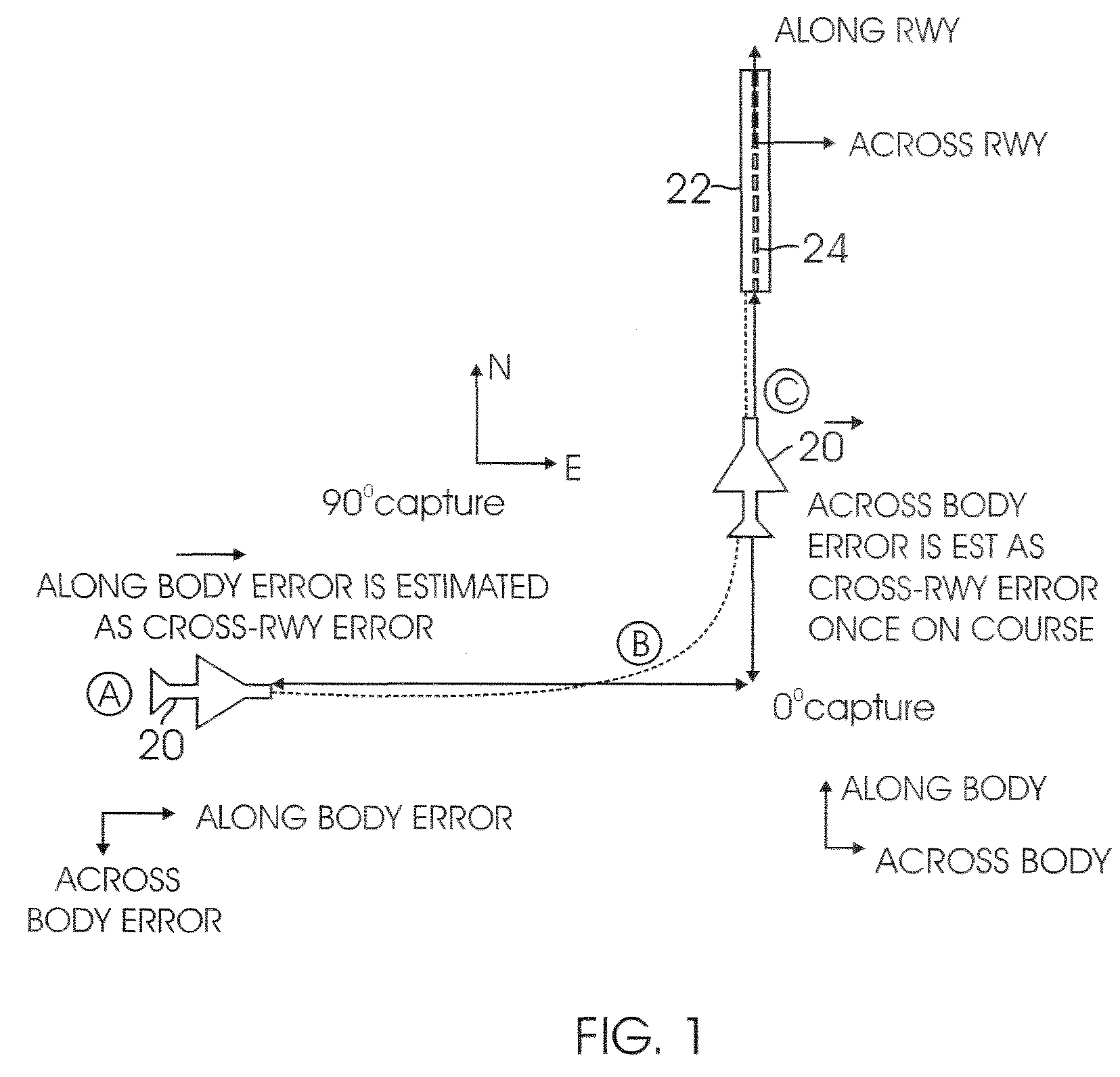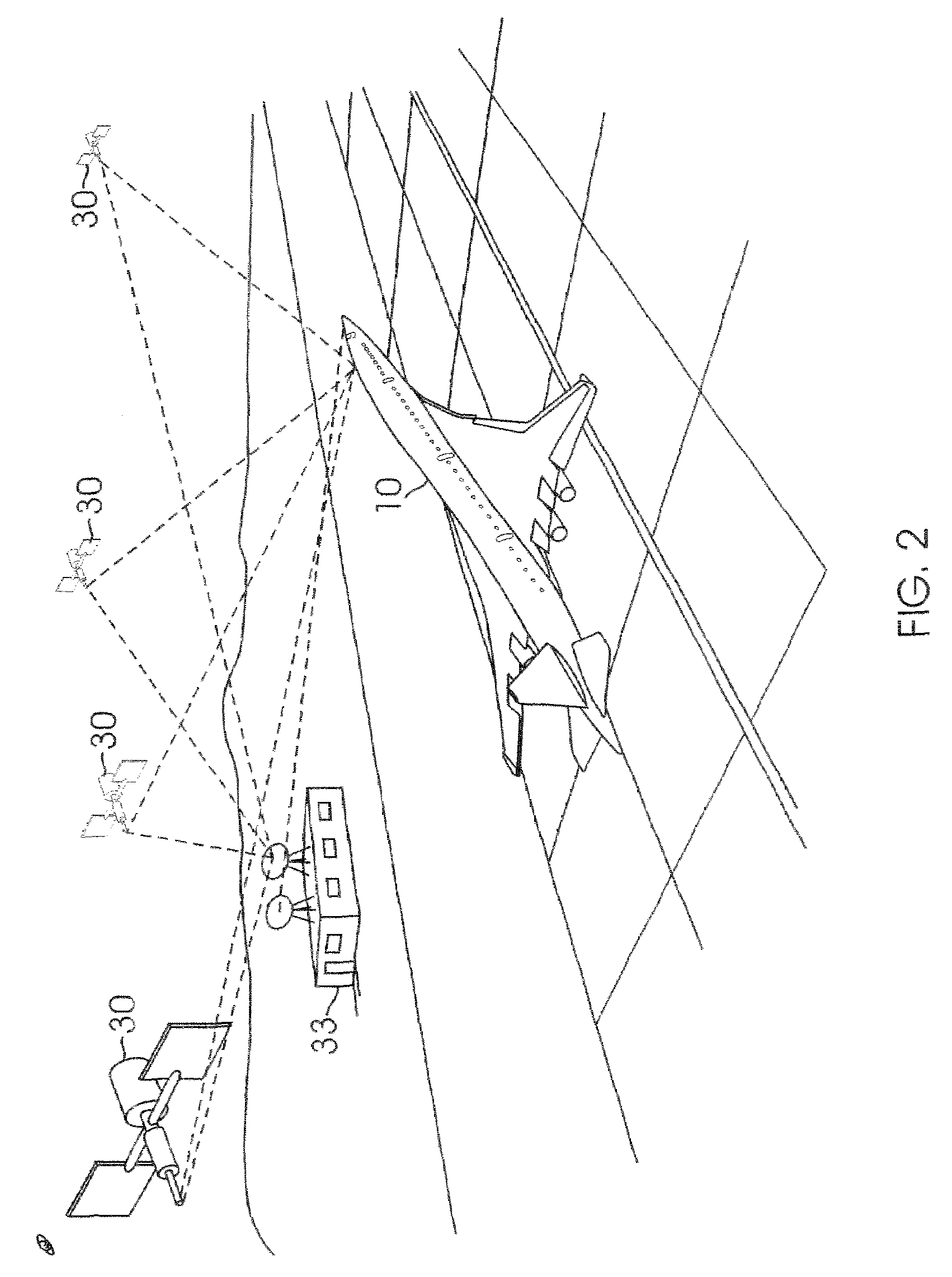System and method for estimating inertial acceleration bias errors
a technology of inertial acceleration and bias error, applied in the field of system and method for estimating bias errors, can solve the problems of expected gls failure mode and their affect on the aircraft guidance system, most common failure mode of gls will be a total loss of external updates, gls position and velocity,
- Summary
- Abstract
- Description
- Claims
- Application Information
AI Technical Summary
Benefits of technology
Problems solved by technology
Method used
Image
Examples
Embodiment Construction
[0024]The disclosure provides an onboard navigation system and method for estimating inertial acceleration bias errors without the computational burden and / or complexity of conventional filtering schemes. Instead, a set of complementary filters is used to combine accelerometer outputs with position and / or velocity updates from an independent source.
[0025]Although the system and method of the disclosure are described with reference to an autopilot system for an aircraft, those skilled in the art will recognize that the principles and teachings described herein may be applied to a variety of navigation systems.
[0026]FIG. 1 is a schematic diagram of an aircraft 20 using an onboard navigation system to autoland on runway 22. At position A, aircraft 20 is flying in an easterly direction, while runway 22 at point C has a northerly heading. In order to land on runway 22, aircraft 20 must maneuver from point A to point C; through point B (a 90° change in direction) and align itself with run...
PUM
 Login to View More
Login to View More Abstract
Description
Claims
Application Information
 Login to View More
Login to View More - R&D
- Intellectual Property
- Life Sciences
- Materials
- Tech Scout
- Unparalleled Data Quality
- Higher Quality Content
- 60% Fewer Hallucinations
Browse by: Latest US Patents, China's latest patents, Technical Efficacy Thesaurus, Application Domain, Technology Topic, Popular Technical Reports.
© 2025 PatSnap. All rights reserved.Legal|Privacy policy|Modern Slavery Act Transparency Statement|Sitemap|About US| Contact US: help@patsnap.com



